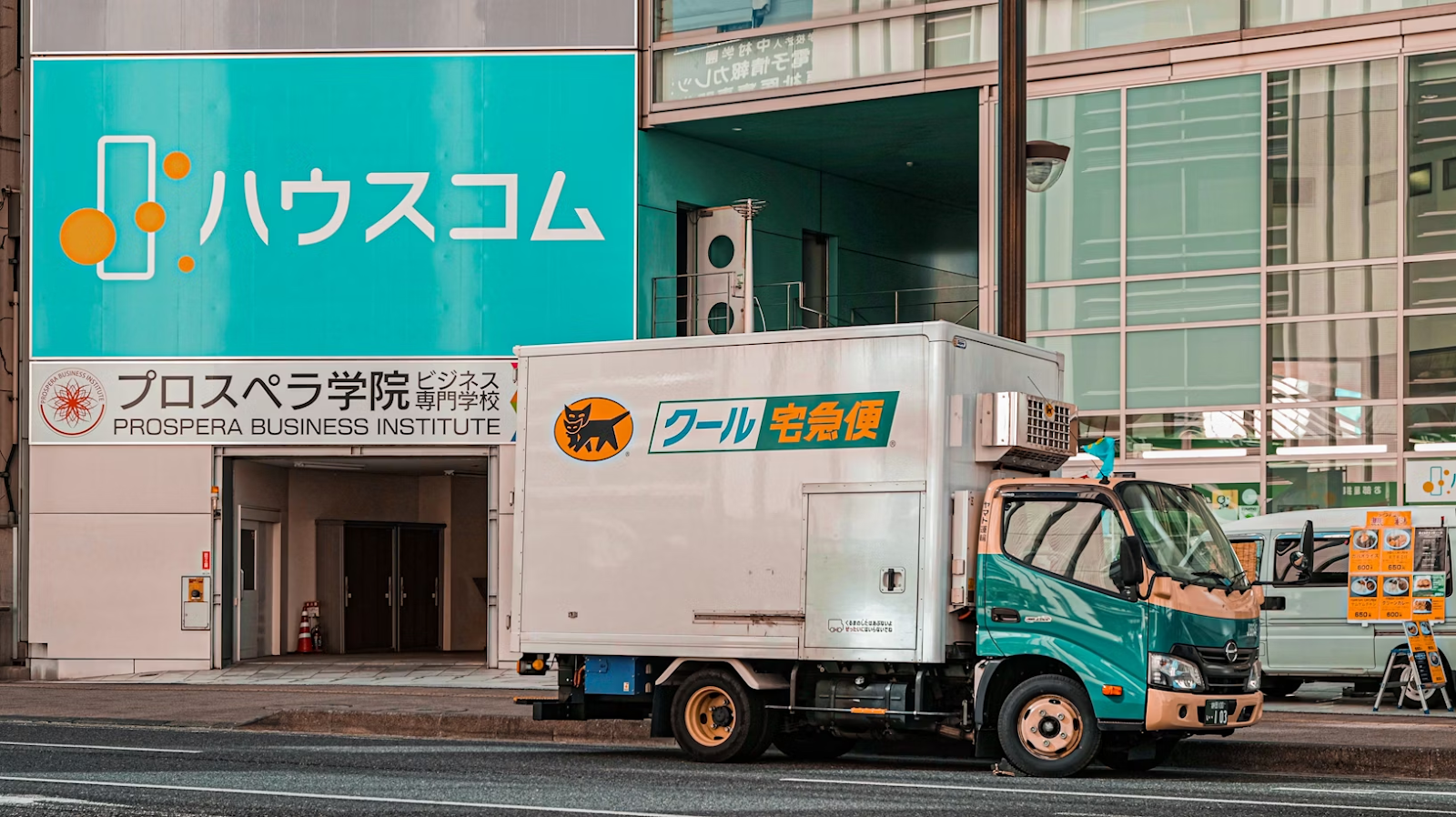The Premium Play: Why Japanese Imports Command Higher Prices
.png)
A Korean rice cooker costs $80. The same capacity Japanese model sits next to it at $250. Both cook rice. Both have fuzzy logic. The Korean one probably has more features. Guess which one sells out first?
I watched a customer spend twenty minutes comparing two nail clippers last week. The Chinese one cost $3, the Japanese one $35. She bought the Japanese one without hesitation after learning it was made in Seki City. For nail clippers.
This pricing insanity makes perfect sense once you understand the psychology. Japanese imports don't compete on features or even quality anymore. They compete on something harder to replicate: cultural faith in perfectionism.
The Quality Obsession
Japanese manufacturing operates on a different planet from everyone else. They have meetings about quality control. A single scratched product might trigger a full production line review. This isn't marketing fluff. It's pathological perfectionism that somehow became a business model.
The zero-defect mentality means rejecting products others would call perfect. I've seen Japanese factories destroy entire batches because the color was imperceptibly off. Not wrong, just not exactly right. This waste gets built into pricing, and consumers somehow thank them for it.
Packaging tells the whole story. A Japanese kitchen knife arrives in a wooden box, wrapped in paper that feels like silk, with documentation that resembles a birth certificate. The unboxing takes five minutes. Chinese competitors ship the same steel in bubble wrap. Both cut vegetables. One costs five times more.
The inspection culture borders on religion. Every product gets checked, rechecked, then checked again by someone else. Random testing isn't random. It's constant. They photograph products before shipping to prove perfection. This theatrical quality control costs money, and customers happily pay for the show.
Materials selection follows logic that accountants hate. They'll use steel that's 3% better for 50% more cost. Normal businesses would value-engineer this away. Japanese companies treat it as non-negotiable. The customer might never notice the difference, but the company would know.
Smart importers lean into this obsession when marketing. They don't just mention quality. They document it exhaustively. Certificates of authenticity, production process videos, maker signatures. Some even use automated direct mail to send physical quality documentation to customers, because emails feel too cheap for premium products.
The repair and service philosophy adds another pricing layer. Japanese companies assume their products will last decades and support them accordingly. Replacement parts for 20-year-old products? Available. Instructions for maintenance? Detailed to absurdity. This long-term thinking justifies higher upfront costs.
Even failure modes are engineered differently. When Japanese products break, they break safely and obviously. No limping along, no dangerous failures. This over-engineering means paying for scenarios that might never happen, but customers value the insurance.
The Cultural Premium
Limited editions are Japan's economic weapon. A regular Seiko watch costs $200. The "Sakura Bloom Spring Edition" with pink hands? $800, and it sells out in hours. They made the scarcity part of the product. You're not buying a watch. You're buying participation in Japanese seasonality.
The authenticity game works because Japan gatekeeps aggressively. "Genuine Japanese" means made in Japan, by Japanese companies, using Japanese methods. The moment production moves to Vietnam, the premium evaporates. Consumers know this and pay accordingly.
Regional specialization adds another premium layer. Imabari towels, Sabae eyeglasses, Sakai knives. Each region guards its reputation like a nuclear secret. Products from these areas cost triple their generic equivalents. A towel is a towel until it's from Imabari. Then it's an investment in your bathing experience.

Seasonal releases create artificial urgency that consumers embrace. Spring cherry blossom editions, autumn maple leaf versions, winter snow variants. The base product stays identical, but themed packaging and limited availability trigger buying panics. KitKat built an empire on this. 300+ flavors, most available for weeks.
The supply chain complexity justifies some pricing but not all. Getting products from small Japanese workshops to global markets involves Byzantine logistics. Minimum orders, consolidation delays, customs peculiarities. Companies like those shipping from japan to singapore charge premiums for handling the complexity. But logistics might add 20% to costs. Retail prices are often 200% higher.
Japanese companies mastered the art of inconvenience as luxury. Three-month waiting lists for bags. Lottery systems for limited releases. Membership requirements for purchasing rights. They make spending money difficult, which makes people want to spend more.
The craftsmanship narrative works even for mass-produced items. That factory-made ceramic mug has a "maker's story" about generational expertise. The electronics assembled by robots get marketed with photos of serious men in white coats. Performance matters less than perceived dedication.
Cultural education becomes part of the premium experience. Buyers learn about wabi-sabi, omotenashi, and kaizen. Japanese terms become quality indicators. Products come with philosophy lessons. You're not just buying soy sauce. You're investing in understanding the shokunin (craftsman) spirit.
The copying problem barely affects Japanese premiums. Chinese manufacturers can duplicate the product but not the provenance. Korean companies match the quality but lack the mystique. The "Made in Japan" label carries weight that transcends the physical product.
Collaborations amplify premiums exponentially. Japanese brand plus Western designer? Triple the price. Limited edition collaboration with an artist? Mortgage payment territory. Uniqlo times Jil Sander equals lines around the block for basic T-shirts at luxury prices.
The aging craftsman crisis ironically strengthens premiums. "Last generation of traditional makers" becomes a selling point. Scarcity isn't just about limited products anymore. It's about limited producers. Every retirement announcement triggers buying frenzies.
The Business Reality
The margin structures on Japanese imports look insane until you understand the ecosystem. Wholesale costs 40% above comparable products. Shipping adds 15%. Import duties vary. But retail markups hit 200-300%, and somehow it works. The premium positioning allows pricing that would kill other imports.
Distribution exclusivity drives much of the pricing power. Japanese suppliers love sole distributorships. One importer per country, sometimes per region. This artificial scarcity lets importers maintain pricing discipline. No race to the bottom when you're the only source.
Inventory financing gets expensive fast. Japanese suppliers rarely offer credit terms. You pay upfront, wait 60-90 days for production, then shipping time. Your money is tied up for months before seeing revenue. Only high margins make this cash flow torture worthwhile.
The quality burden shifts legal risks in unexpected ways. Premium pricing creates premium expectations. When that $300 Japanese kitchen gadget fails, customers don't just want refunds. They want compensation for disappointment. Import businesses need protection against liability claims that wouldn't exist for cheaper products. Issues requiring workcover lawyer involvement become more likely when handling premium goods with higher stakes.
Return rates stay mysteriously low despite high prices. Or because of them. Customers who spend $500 on a Japanese denim shirt convince themselves it's perfect. Cognitive dissonance becomes quality control. The more people pay, the less they complain.
Marketing Japanese Premiums

Storytelling replaces feature comparison in Japanese import marketing. Nobody cares that your knife has VG-10 steel. They care that it's made by a 70-year-old craftsman whose grandfather started the forge. Facts bore. Mythology sells.
Physical retail becomes a theater for Japanese products. Minimalist displays, careful lighting, reverent presentation. Products get displayed like museum pieces because that's what justifies museum pricing. Online stores recreate this with excessive photography and verbose descriptions.
Customer education requires genuine investment. Workshops on Japanese tea ceremony to sell teapots. Knife skills classes to move inventory. Rice cooking demonstrations for rice cooker sales. You're building culture appreciation, not just moving products. Education becomes part of the product value.
Influencer marketing works differently for Japanese premiums. Mass-market influencers actually hurt. You want the obsessive hobbyist with 5,000 followers who writes 2,000-word reviews. Depth beats reach when selling $400 scissors to people who already own scissors.
The slow burn approach frustrates investors but builds empires. Japanese premium brands have been around for decades. First year: lose money building awareness. Year three: break even. Year five: cult following. Year ten: category domination. Patience becomes a competitive advantage.
Price anchoring strategies get aggressive. Show the $10,000 handmade version first. Suddenly the $500 mass-produced option looks reasonable. Japanese brands mastered making expensive products feel like value.
The Bottom Line
Japanese imports command premiums because they've transcended product categories to become cultural artifacts. You're not buying functionality. You're buying participation in a value system that prioritizes perfection over profit.
This model survives Amazon because it was never about convenience or price. It's about identity and aspiration. As long as people pay extra to feel extra, Japanese premiums remain bulletproof.
.jpg)
.jpg)
.png)